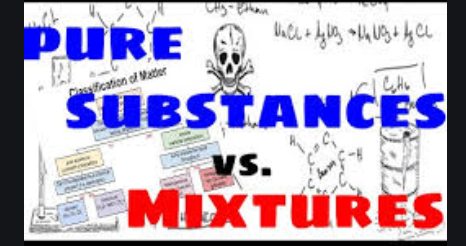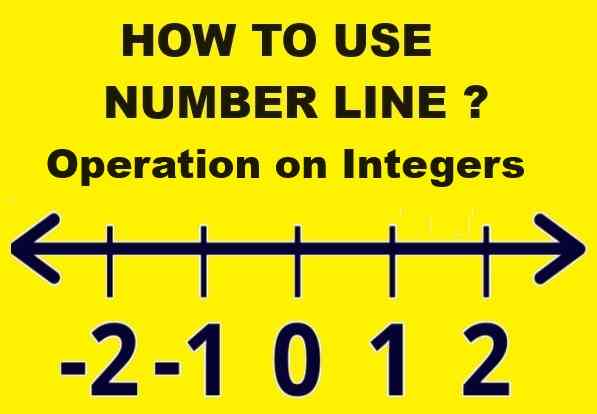Pure Substances and Mixtures Separation of Mixtures ICSE Class-6th Concise Selina Chemistry Solutions Chapter-5. We Provide Step by Step Answer of Objective, True False , Fill in the blanks , Match the following , Short/Long Answer Type of Exercise-5 Pure Substances and Mixtures Separation of Mixtures . Visit official Website CISCE for detail information about ICSE Board Class-6.
Pure Substances and Mixtures Separation of Mixtures ICSE Class-6th Concise Selina Chemistry Solutions
EXERCISE – I
Question 1.
Select homogeneous and heterogeneous mixtures from the following:
Salt solution, petrol and water, sand and charcoal, alcohol and water, air dissolved in water, air, sea water, fruit juices, mist, brass.
Answer:
Homogeneous mixture : Salt solution, alcohol and water, air dissolved in water, sea water, brass.
Heterogeneous mixture: Sand and charcoal, air, fruit juice, mist, petrol and water.
Question 2.
Define the following :
(a) Pure substance
(b) Impure substance
(c) Alloy
(d) Solution
(e) Heterogeneous mixture
(f) Homogeneous mixture
Answer:
(a) Pure substance :
“Pure Substance is either element or compound. It contains the same kind of atom or molecules and has a definite set of physical and chemical properties.”
(b) Impure substance :
“A substance in which some other substances are also present in smaller or larger amounts is called an impure substance. Mixtures are impure substance.
Example of impure substance is air.
(c) Alloy :
“A homogeneous solid mixture of two or more metals or a metal and a non-metal is called an alloy.”
(d) Solution :
“The homogeneous mixture of water (or any other solvent) and a substance soluble in it is called a solution.”
(e) Heterogeneous mixture :
“A mixture in which the components are not uniformally distributed through its volume and can be easily seen separately is called heterogeneous mixture.”
(f) Homogeneous mixture :
“A mixture in which its constituents are uniformly distributed throughout its volume and cannot be seen separately is called a homogenous mixture.”
Question 3.
List four characteristics of a mixture.
Answer:
Four characteristics of a mixture :
- Mixture has no fixed composition.
- To form a mixture energy is neither produced nor evolved.
- Mixture has no fixed melting’point and boiling points.
- Mixture retain the properties of its components.
- Components of mixtures can be seperated by simple physical methods.
Question 4.
Give reasons :
(a) Why do sugar and water retain their individual properties in a sugar solution ?
(b) Why do petrol and water form a heterogeneous mixture ?
(c) Why sulphur does dissolve when carbon disulphide is added to a mixture of iron and sulphur but not when it is added to iron sulphide ?
Answer:
(a)
As sugar solution is a mixture and mixtures has not any specific set of properties. They show the properties of the individual components from which they are formed.
(b)
Petrol and water forms a heterogeneous mixture as its constituents can be seen separately and are not uniformly distributed throughout its volume.
(c)
Sulphur has the property to dissolve in carbon disulphide whereas iron does not dissolve and retains its individual property. However, On heating Iron and Sulphur, they chemically combined forming Iron Sulphide. In this, Iron and Sulphur particles do not exists separately as such they loose their individual property.
Question 5.
Give two examples for each of the following types of mixture.
(a) solid-solid
(b) solid-liquid
(c) liquid-gas
(d) gas-gas
Answer:
Two examples of :
(a) solid – solid –
- sand and sugar
- sand and iron filling.
(b) solid – liquid –
- salt and water
- charcoal and water.
(c) liquid – gas –
- coca cola
- mist.
(d) gas – gas –
- air
- helium and hydrogen in air balloon,
- perfumes and air.
Question 6.
Name the components present in the following mixtures:
(a) Brass
(b) Duralumin
(c) Tap water
(d) Bronze
(e) Crude petroleum oil .
Answer:
(a) Brass → Copper and Zinc.
(b) Duralumin → Aluminium + Copper with little manganese and magnesium.
(c) Tap water → air, dissolved salts.
(d) Bronze → Copper, Tin and zinc.
(e) Crude petroleum oil → petrol, kerosene, diesel, LPG, mixed with salt, water and earth particles.
Question 7.
State:
(a) Three differences between water and air.
(b) Four differences between compounds and mixtures.
Answer:
(a)
Water :
- The components of water are hydrogen and oxygen which are chemically combined in a fixed ratio of 1 : 8 by mass.
- The chemical composition of water remains same from whatever source it is obtained.
- The properties of water are completely different from the properties of elements from which it is formed i.e. hydrogen and oxygen.
- Energy change occurs in the formation of water.
- A molecule of water is represented by a definite formula H2O.
Air :
- The main components of air are nitrogen, oxygen, carbon -dioxide, water vapour which are not chemically combined.
- The composition of air varies from place to place. During rainy season the air becomes humid due to presence of more water vapour. Some impurities like sulphur dioxide, hydrogen sulphide etc. also changes its composition at some places.
- The components of air retain their individual properties but not air.
- No energy change occurs when components of air are mixed together.
- Air cannot be represented by any chemical formula.
(b)
Compound :
- A compound is a pure substance.
- Compounds are always homogeneous.
- A compound has a fixed composition, i.e., it is formed when two or more pure substances chemically combine in a definite ratio by mass.
- Formation of a compound involves change in energy.
- Compounds have specific set of properties.
- Components of compounds can be separated only by complex chemical processes.
Mixture :
- A mixture is an impure substance.
- Mixtures may be homogeneous or heterogeneous.
- A mixture has no fixed composition, i.e., it is formed by mixing two or more substances in any ratio without any chemical reaction.
- Formation of a mixture does not involve any change in energy.
- Mixtures do not have any specific set of properties.
- Components of mixtures can be separated by simple physical methods.
EXERCISE – II Pure Substances and Mixtures Separation
Question 1.
Define:
(a) Filtration
(b) Sublimation
(c) Evaporation
(d) Crystallisation
(e) Miscible liquids
(f) Immiscible liquids
Answer:
(a) Filtration :
The process of separating solid particles from liquid by allowing it to pass through a filter paper is called filtration.
(b) Sublimation :
The process in which a solid changes directly into its vapours on heating is called sublimation.
(c) Evaporation :
Is the process of converting a liquid into its vapours state either by exposing it to air or by heating.
(d) Crystallisation :
Evaporation of liquid from a homogeneous liquit-solid mixture and collecting solid in the form of crystals is called
crystallisation.
(e) Miscible liquids:
Homogeneous liquid-liquid mixtures are called miscible liquids.
(f) Immiscible liquids :
Heterogeneous liquid-liquid mixtures are called immiscible liquids.
Question 2.
Why do we need pure substances?
Answer:
We need pure substances because of the following reasons:
- A pure substance has a fixed melting and fixed boiling point.
- A pure substance has its characteristic taste, colour and odour.
- Pure substances can not be broken further into more simple substances by any physical means.
Question 3.
Give one example for each of the following types of mixtures.
(a) Solid-solid heterogeneous mixture
(b) Solid-liquid heterogenous mixture
(c) Solid-liquid homogeneous mixture
Answer:
(a) Iron and sulphur.
(b) Sand and water, rice and water.
(c) Sugar from its solution in water.
Question 4.
Name the process by which the components of following mixtures can be separated.
(a) Powdered glass and sugar
(b) Chalk powder and iron filings
(c) Chaff and grain
(d) Salt and water
(e) Wheat and sugar
(f) Sand and camphor
(g) Sugar and water
Answer:
(a) FILTRATION :
Glass and sugar on dissolving in water and filtering, glass separates out as residue on the filter paper. Filtrate of sugar solution is heated to remove water by evaporation, sugar is collected as crystals.
(b) MAGNETIC SEPERATION :
With the help of a magnet, iron filings can be separated leaving behind chalk powder.
(c) WINNOWING :
It separates chaff (lighter) from heavier grains in two different heaps.
(d) EVAPORATION :
This method is used to separate the components of a homogeneous solid-liquid mixture, like salt from sea water. Sea water is collected in shallow beds and allowed to evaporate in the sun. When all the water is evaporated, salt is left behind.
(e) EVAPORATION :
Wheat and sugar are put in water in a beaker. Sugar dissolves and mixture is passed through strainer and separated and dried. Sugar is obtained by evaporating sugar solution.
(f) SUBLIMATION :
Camphor sublimes on heating leaving behind sand.
(g) CRYSTALLISATION :
Pure sugar is obtained from its solution in water by the process of crystallisation. At first the sugar solution is heated to evaporate Water at a faster speed. When very less of water is left the solution is cooled. On cooling sugar dissolved in it starts separating out in the form of crystals.
Question 5.
Name:
(a) two substances which can sublime
(b) two substances soluble in water
(c) two substances insoluble in water
(d) four substances that can be used as filters.
Answer:
(a) Camphor and Naphthalene
(b) Sugar and salt (NaCl)
(c) Sand and chalk powder.
(d) (i) Filter paper, (ii) A bead of sand, (iii) Charcoal, (iv) A piece of muslin cloth.
Question 6.
Give reasons :
(a) Sand and saw dust cannot be separated by hand picking.
(b) Magnet is used to separate a mixture of iron and sulphur.
(c) Alum is used in purification of river water.
Answer:
(a) Because in hand picking method substances should be large enough in size to be recognized and picked out by hand but sand and saw dust particles are very small in size so they can’t be picked by hand. It can be separated by filtration.
(b) Mixtures of iron and sulphur can be separated by moving a magnet over them. Iron gets attached to the magnet is separated.
(c) Water from a river, pond or lake contains very fine clay particles. To make them settle at a faster rate, a chemical substance called alum in powdered form is added to such mixtures. It dissolves in water and forms clusters with clay and dust particles making them heavier and increasing the rate of sedimentation.
OBJECTIVE TYPE QUESTIONS Pure Substances and Mixtures Separation
1. Fill in the blanks
(a) The substances that make a mixture are called its constituents or components.
(b) Evaporation or crystallisation is a process to separate solids dissolved in liquids.
(c) Mist is a heterogeneous (liquid in gas) mixture of droplets of water and air.
(d) Clay is separated from water by the method of loading and decantation.
(e) When cereals are washed before cooking, water is separated from the cereals by decantation.
(f) Crystallisation is a process to obtain a very pure form of a solid dissolved in a liquid.
(g) Ammonium chloride can be separated from common salt by the method of sublimation.
(h) The solid particles which remain on the filter paper are called residue and the liquid which passes through it is called filtrate.
(i) The process of transferring the clear liquid layer above the solid particles which settle at the bottom of the container is known as decantation.
(j) Filtration is a method used for the separation of an insoluble solid from a solid-liquid mixture.
2. Write “true” or “false” for the following statements
(a) A pure substance consists of only one kind of atom or molecule.
Answer. True
(b) Common salt is separated from its solution in water by decantation.
Answer. False
Correct : Common salt is separated from its solution in water by evaporation.
(c)
Winnowing is a process to remove small stones from grains.
Answer. False
Correct : Winnowing is a process to remove husk from grains.
(d) Jewellery gold is a homogeneous mixture of metals.
Answer. False
Correct : Jewellery gold is a heterogeneous mixture of metals.
(e) Air can be separated from water by filtration.
Answer. False
Correct : Air can be separated from water by heating.
(f) Salt and air dissolved in water add taste to water.
Answer. True
(g) Steel is an alloy of iron and aluminium.
Answer. False
Correct: Steel is an alloy of iron and carbon.
MULTIPLE CHOICE QUESTIONS Pure Substances and Mixtures Separation
Tick (√) the correct alternative from the choice given for the following statements:
1. The process of adding a chemical substance to help the suspended solid particles to deposit as sediment fastly is called
- loading
- sedimentation
- decantation
- filtration
Answer.
loading
2. Salt is separated from sea water by
- evaporation
- sublimation
- crystallisation
- filtration
Answer.
evaporation
3. A mixture of mustard oil and water forms
- a compound
- a homogeneous mixture
- an alloy
- a heterogeneous mixture
Answer.
a heterogeneous mixture
4. A heterogeneous mixture is
- made up of only one kind of atom
- make up of only one kind of molecule
- made up of different kinds of atoms and molecules.
- that looks uniform
Answer.
that looks uniform
5. Example of a homogeneous mixture is
- distilled water
- tap water
- sand and water
- sawdust and water
Answer.
tap water
6. A set of mixture is
- gold, common salt, water, alloy
- alloy, ink, honey, icecream
- alloy, mercury, air, sea water
- milk, duralumin, brass, silver
Answer.
alloy, ink, honey, icecream
7. A gas dissolved in a liquid can be separated by :
- filtration
- boiling
- using magnet
- by crystallisation
Answer.
boiling
8. Copper is not a part of the alloy :
- brass
- bronze
- steel
- duralumin
Answer.
steel
9. Which is not a mixture?
- sugar solution
- tap water
- milk
- distilled water
Answer.
distilled water
10. Give one word name for the following
(a) The solid which is left on the filter paper after filtration residue.
(b) The solid particles which separate out from the solution on slow evaporation crystals.
(c) The solid particles that settles at the bottom of the beaker in a heterogeneous mixture of a solid and a liquid decantation.
(d) The clean liquid which is poured out after sedimentation supernatant liquid.
(e) The technique used to separate the light particles from heavy particles using the flow of wind winnowing.
— : End of Pure Substances and Mixtures Separation :–
Return To ICSE Class – 6 Concise Selina Chemistry Solution
Thanks




